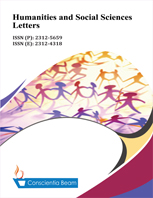The role of organisational culture in conflict management among university stakeholders
DOI:
https://doi.org/10.18488/73.v11i3.3439Abstract
Organisational conflict is a pervasive issue in university systems, particularly in South Africa, which can harm the work environment and productivity if left unaddressed. This research investigates how organisational culture affects conflict management practices among university stakeholders and proposes measures to establish a culture that promotes effective conflict resolution. Drawing on the competing values framework (CVF) and social identity theory (SIT), the study adopts a transformative paradigm perspective, utilising a participatory research design to encourage collaborative problem-solving. Ten prominent stakeholders were purposefully selected from a specific university, including two deans, two heads of departments, two lecturers, two student leaders, and two non-teaching staff members. Semi-structured interviews were conducted to gather data, which were then analysed thematically. The results indicate that a culture of respect, inclusivity, and openness, as well as training and resources, significantly affect conflict resolution. Consequently, open communication, active listening, collaboration, and a culture of diversity, inclusivity, and respect were identified as practical approaches to create a culture of effective conflict resolution. The study concludes that establishing a culture that promotes effective conflict resolution in universities necessitates prioritising open communication, active listening, and collaboration and fostering a culture of diversity, inclusivity, and respect.

